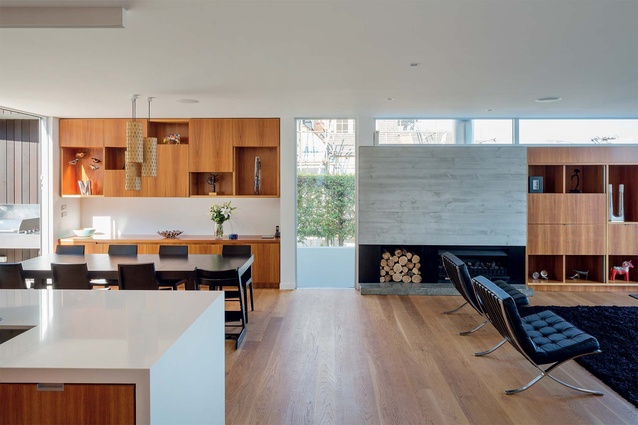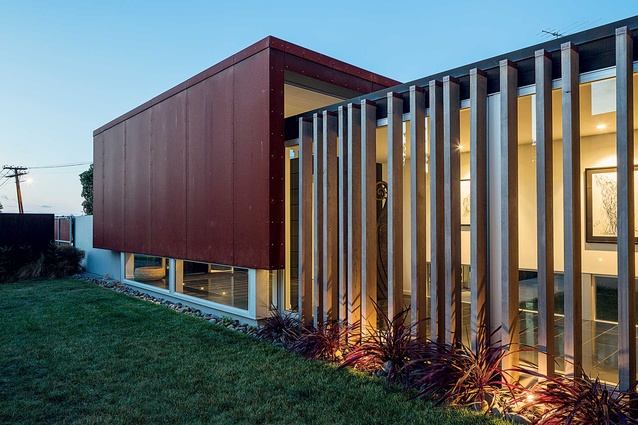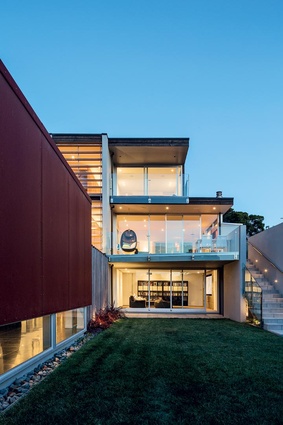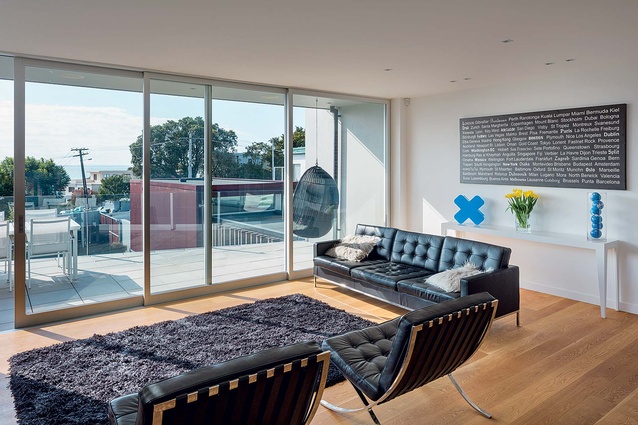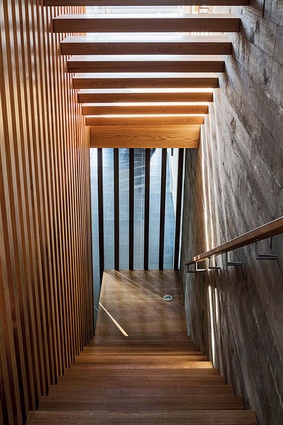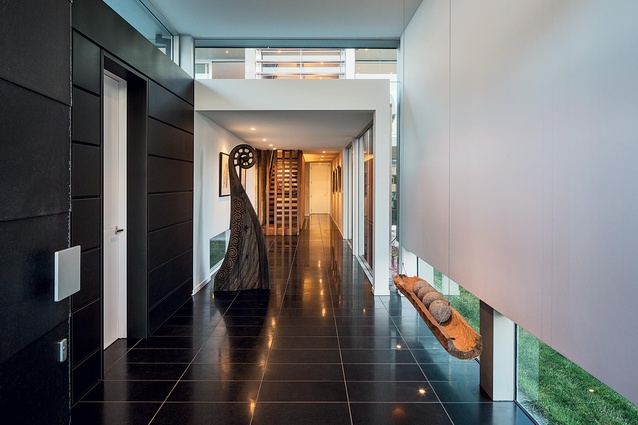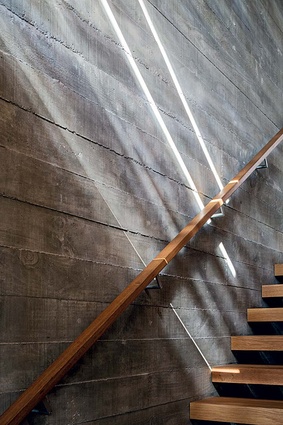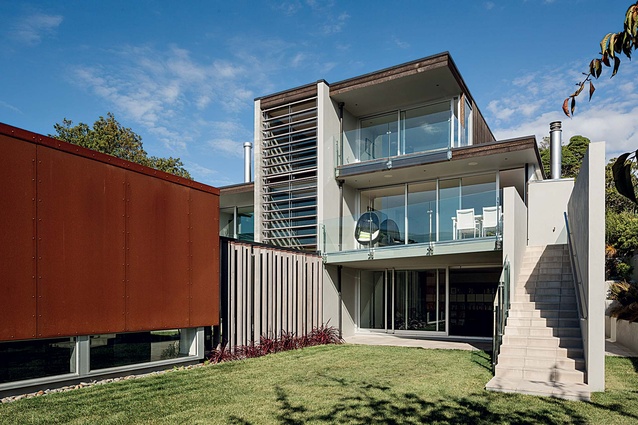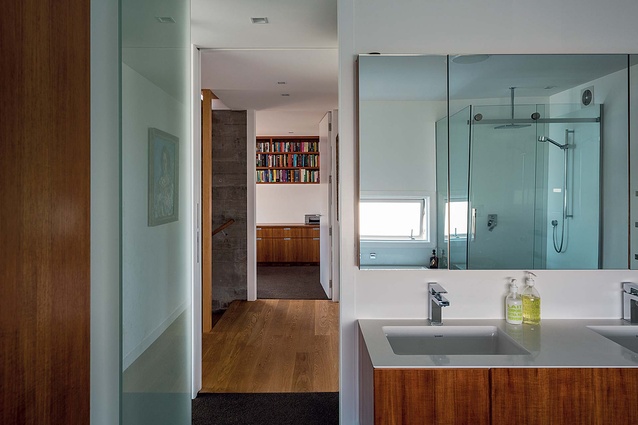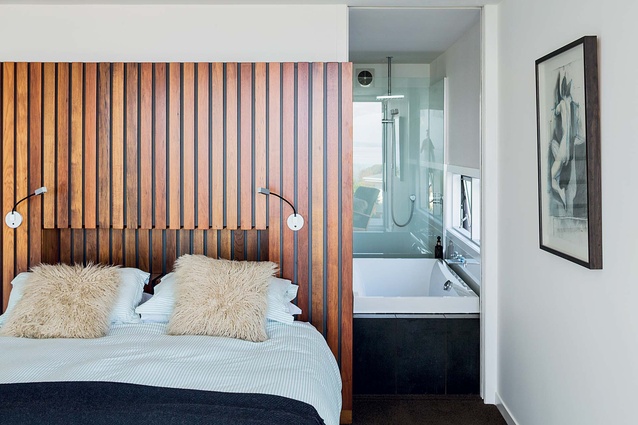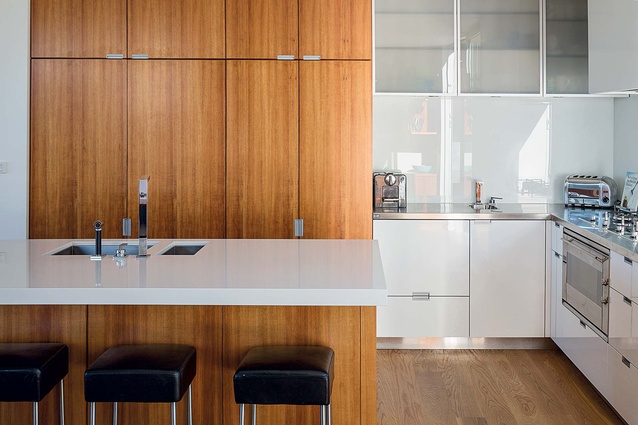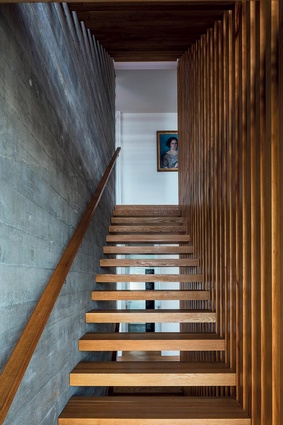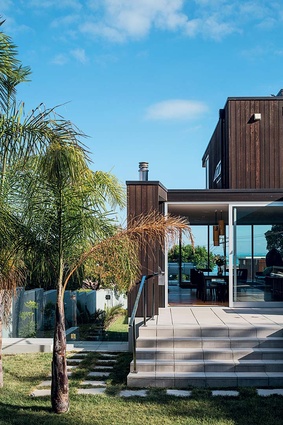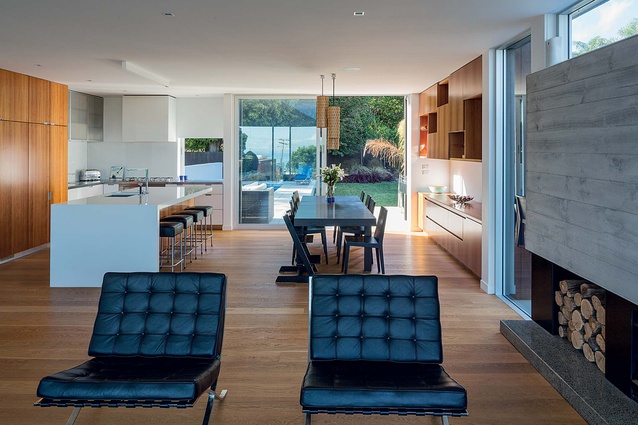In plain sight
Sometimes, the most difficult sites inspire the most interesting dwellings. This house is a case in point. “It was a tricky site because it is very deep with the best views high up at the back. But we also wanted to make the most of the flat area to the front, which faces north,” explains Ken Crosson, creator of the contemporary home that is made up of a collection of boxes and courtyards.
There was an existing but rather tired mid-century house on the St Heliers site when the owners purchased it. Their initial expectation was that the house could be altered to achieve their vision but, after discussions with Crosson, the owners realised that it had to go. Private people with a love of art and the sea, they wanted a house that would open up, take in the views and maximise the sun but still retain a strong sense of privacy. The resulting design process took a year and construction took 18 months. It is to Crosson’s credit that he delivered on all matters.
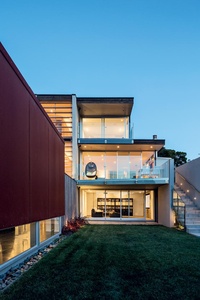
The architect from Crosson Clarke Carnachan placed the house as far back as he could to make the best use of the height. The house floats in the centre of the site, opening out to a series of formal and informal spaces that are carefully framed to enhance their – and the owners’ –privacy. “It is,” says Crosson, “essentially a courtyard house.”
It’s a long way from the double garage at the front of the section back to the 405m² house. Where other architects may have treated this as a landscaped path to the front door, Crosson enclosed it and created an entrance gallery several metres long. Entering the house is a journey: a progression that starts with broad concrete pavers set in gravel that lead to an entrance box clad in Coreten steel with low windows at ankle height. Carefully placed glass slots afford glimpses of the house ahead and the courtyards created alongside the gallery, while maintaining privacy. “One owner is part- Ma– ori; the other is Scandinavian,” says Crosson. “The gallery contains a nice fusion of the artefacts of their lives.”
The main organising element for the house is a skilfully designed timber stairway that rises three floors from the entry gallery. On one side is a concrete wall out of which the timber treads appear to float; on the other, a series of vertical timber columns extends the full three flights, like a series of masts, hinting at a nautical theme. Floor-to-ceiling windows at the foot of each flight are mediated with giant timber louvres that offer privacy from the street and a view out. The stairway is a reminder that even the most prosaic and functional spaces in our houses can be elegant, fun and a source of joy.

Crosson, who explains he is interested in designing “spaces for occasions”, wanted this concept to “extend to the outside, making a series of outside rooms: a guest courtyard, a family courtyard, a pool courtyard”. The floor area of the house is smaller with each level as it sits back against the hill. The first floor is extremely simple with two living spaces: one large with the kitchen dining and living areas; the other, smaller and more discrete. Crosson calls this latter room a “little cave space” and it is a study in simplicity: a room for quiet contemplation. Crosson thinks the larger, main living area has worked out well too: “The space works in both directions – fore and aft: at one end is the north with sun, views and a deck; at the other is the courtyard with a pool. So the room gets all-day sun.” The deck to the north leads, in turn, downstairs to the grassed courtyard below.
The kitchen is a muted mix of timber and white; the floorto- ceiling wooden pantry doors anchor one end while the white cabinetry hides the microwave while revealing the oven. The island is simple, elegant and solid. The main bedroom is on the third floor with a generous en suite and views through a window to the Waitemata beyond. The room is well proportioned with a bedhead lined vertically with timber to mimic the stairway. Across the hall is a small study with windows at desk level and bookshelves above.
This could have been the end of the journey, but the stair loops around for one last flight rising to a boat hatch in the ceiling. Climbing through is like emerging onto the deck of a yacht. The small roof deck that sneaks just under the height limit offers 270° views from Rangitoto, across the North Shore, to the CBD and the Sky Tower and round to the volcanic cones. It’s the house’s best-kept secret.

